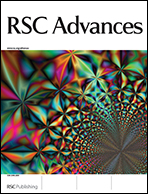This work is aimed at the investigation of the C60-tetraoctylammonium bromide (TOAB) composition by IR and UV-vis spectroscopy and quantum-chemical simulation of the interaction of C60 with TOAB. For the C60-TOAB composition in the neutral state, no shifted or broadened bands characteristic of both C60 and TOAB were observed at 1600–1000 cm−1, as well as in the range of stretching vibrations of C–H bonds, as compared with the spectra of individual compounds. For the first time, an ionic compound of fullerene with symmetrical tetraoctylammonium cation (TOA+) has been prepared by the slow diffusion of hexane into C60 solution in o-dichlorobenzene reduced by sodium fluorenone in the presence of a stoichiometric quantity of TOAB. The crystal structure of the (TOA+)(C60˙−) compound (1) is formed by C60˙− anions and TOA+ cations only. C92H68N, Mr = 1187.47 g mol−1, black parallelepipeds, orthorhombic crystal system, P212121, a = 14.7270(10), b = 18.252(2), c = 22.211(2) Å, V = 5969.9(9) Å3, Z = 4, R1 = 0.1222. The formal charge on fullerene is −1, in accordance with the IR spectrum of 1. Each C60˙− radical anion is surrounded by four TOA+ cations, one of which forms four shortened H(TOA+)⋯C(C60˙−) contacts of 2.76–2.86 Å. The TOA+ cation does not fully screen the C60˙− since densely packed zigzag chains built of C60˙− with equal short interfullerene distances of 9.79 Å are formed. Calculations performed using the density functional method for the C60-TOAB systems are in qualitative agreement with experimental data (number and values of shortened H(TOA+)⋯C(C60˙−) contacts, IR spectra etc.). The energy of the C60 interaction with environmental molecules decreases in the order: (TOA+)(C60˙−) > (Br−)(TOA+)(C60˙−) > Br−(TOA+)C60(TOA+)Br−. On the contrary, the distances between the hydrogen atoms of the octyl group of TOAB and carbon atoms of the fullerene sphere increase in this order and fall in the 2.77–2.81, 3.20–3.56 and 3.72–3.89 Å ranges, respectively. The interactions provide a microenvironment for fullerene molecules necessary for the coating operation in aqueous solution.


 Please wait while we load your content...
Please wait while we load your content...